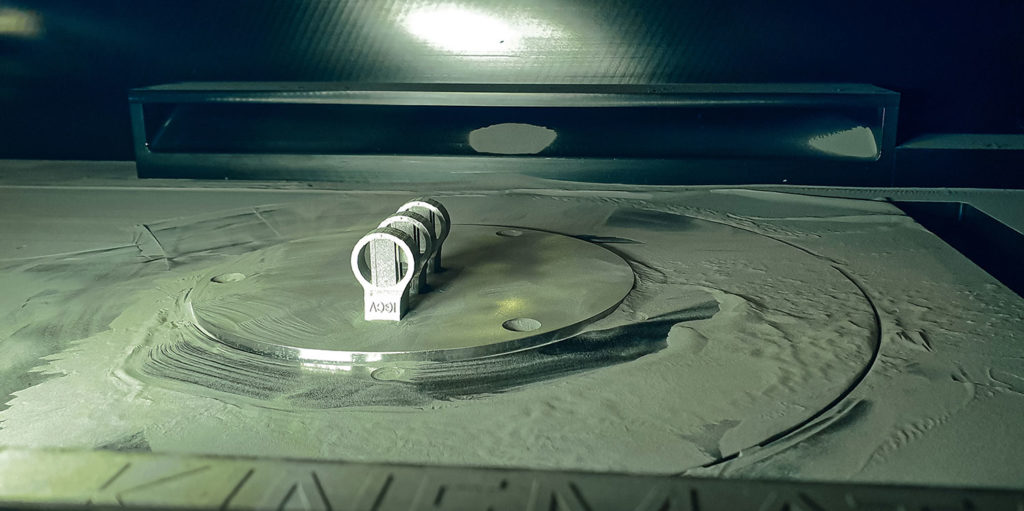We often need to dig out our keys or wallet from the bottom of the shopping bag in all the hustle and bustle at the supermarket. A smart ring could soon put an end to such frantic searches. The intelligent ring could replace house key, wallet, health insurance card, hotel key card in the future.
A research team at Fraunhofer Institute for Casting, Composite, and Processing Technology IGCV has developed the intelligent ring as part of the larger Kinematam project. It is manufactured using a 3D printing process with an integrated RFID (radio frequency identification) chip, which is forgery-proof, sealed, and invisible in the finger ring.
What is actually even more important than the multifunctional ring in this project is the manufacturing process and the ability to directly integrate electronics during the manufacture of a ring or other object.

The fabrication goes as follows: A laser beam is guided over a bed of fine metal powder. At the point where the laser beam hits the powder, it melts and then solidifies to form a composite material. The rest of the metal, which is not exposed, retains its powder form. The ring is built up layer by layer, leaving a cavity for the electronics. The process is stopped halfway through: A robotic system automatically takes an RFID chip and places it in the recess before continuing the 3D printing process, sealing the tag inside of the ring by printing a layer of metal over top of it.
According to Fraunhofer, this precisely controllable production technology opens the door to numerous possibilities for realizing completely individualized ring designs. And the chip is always sealed by the ring, making it tamper-proof.

One of the problems that needed to be solved was how to send the electromagnetic signals from the RFID chip through the metal. This is because metal is usually an effective shield against these kinds of signals. The research team found a solution: to use a frequency of 125 kilohertz (kHz), allowing the signals to pass through the metal better than would be possible at a longer frequency.
Plus, the tag is affixed in such a way that its signals have to penetrate just one millimeter of metal. The cavity design and the way the electronics are embedded also play a role in transmitting the signal.
Such smart rings could ultimately be used for tasks such as paying at the checkout, opening the smart front door, or even conveying vital medical information to first responders. It could also act as our health insurance card when attending a medical appointment or replace the key card in a hotel. According to Fraunhofer, the technology can be applied wherever conventional methods of integrating electronics are difficult. The researchers themselves are currently working, for example, on an application in the production technology sector.
